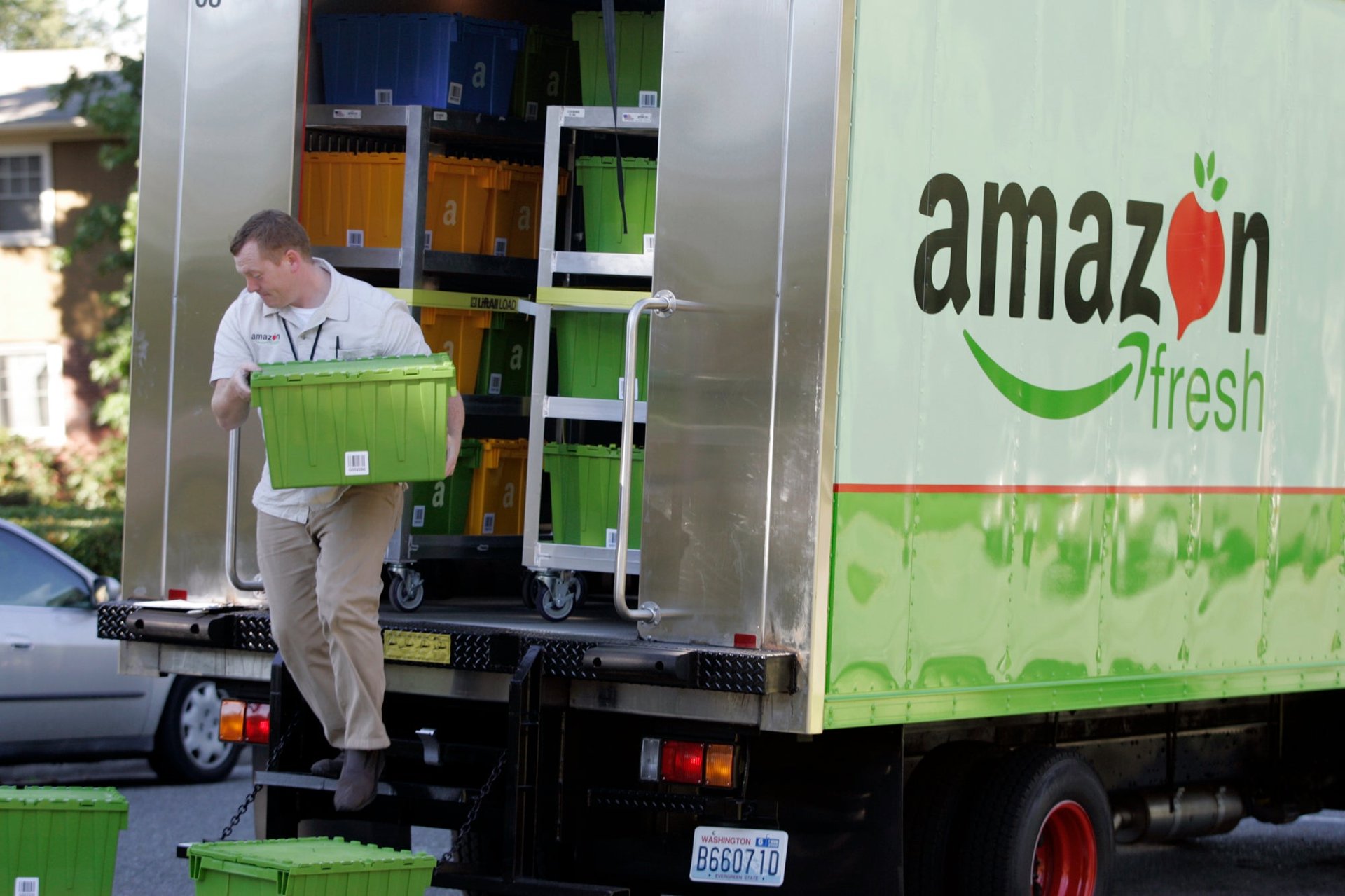Americans on food stamps are getting access to Amazon’s online grocery deliveries
From the middle of this year, the US government is expanding the reach of its food-stamp program—and some of the biggest online retailers are getting in on the action.


From the middle of this year, the US government is expanding the reach of its food-stamp program—and some of the biggest online retailers are getting in on the action.
The US Department of Agriculture recently announced a two-year pilot of expanding the Supplemental Nutrition Assistance Program (SNAP), also known as food stamps, to allow poorer Americans to pay for online grocery orders for the first time. It’s starting with seven states, mostly in the northeast.
Amazon, which operates a grocery-delivery service called Fresh, and FreshDirect are two of the larger online food retailers selected for the pilot program, along with five other national and regional stores. (AmazonFresh is $14.99 a month as an add-on available only to Amazon Prime members, which costs $99 for a year-long membership. FreshDirect can charge between $6.99 and $15.99 for deliveries with a minimum $40 purchase, which are waived if you pay the $129 annual membership fee.)
At those prices, these services were unaffordable for most of the one in seven Americans that use food stamps—until now. (In most cases, you have to meet a maximum income threshold to qualify for SNAP—currently, a net income of $2,025 for a four-person household, for example.)
With more than 43 million recipients of SNAP’s monthly food budget supplement, it also gives big companies like Amazon access to the US government’s food-subsidy program for the first time. In fiscal 2016, the federal government spent about $71 billion (pdf) on SNAP. That money was being spent in supermarkets and some dollar stores until now. The pilot will benefit both retailers like Amazon and FreshDirect—who get an indirect government subsidy for at least a small part of their customer base—and the SNAP users themselves.
“Online purchasing is a potential lifeline for SNAP participants living in urban neighborhoods and rural communities where access to healthy food choices can be limited,” USDA secretary Tom Vilsack said in a statement. “We’re looking forward to being able to bring the benefits of the online market to low-income Americans participating in SNAP.”
SNAP participants are reminded that benefits only apply to eligible food items, such as meat and vegetables, and do not cover service or delivery charges, according to the USDA.